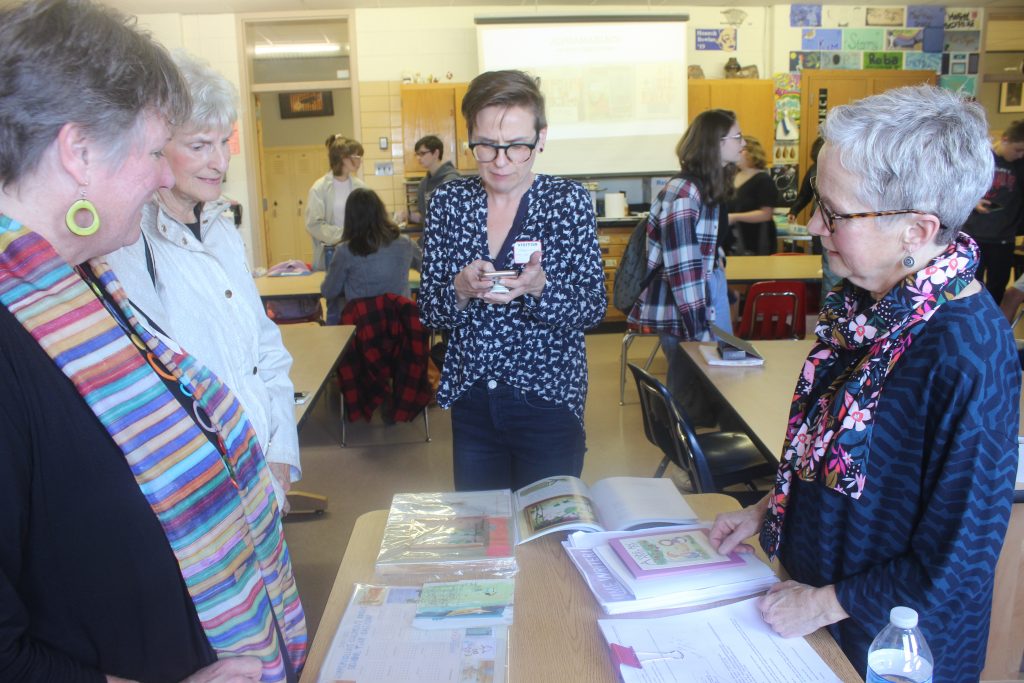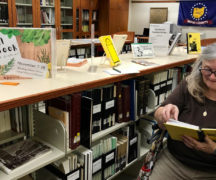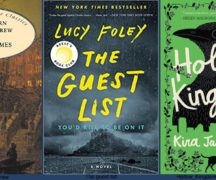By DAVID DUPONT
BG Independent News
Melissa Sweet graduated from high school in 1974. Forty-five years later, she still sees herself in the faces of the students gathered in the art classroom in Bowling Green High School.
She remembers making her first silver ring, and making the kind of drawings on display in the studio.
What she didn’t do, that they are doing, was study the work of a children’s book illustrator and writer.

Sweet was in town for a talk at the Wood County District Public Library. She also met with children’s literature classes at Bowling Green State University.
Growing up in New Jersey, Sweet read the work of Maurice Sendak and Golden Books. It wasn’t until she graduated from college that her attention turned to the studying the art of the picture book. Her work then, she said, was “sort of sweet and nice” and that seemed to lend itself to the kids lit trade.
Now a two-time winner of the Caldecott Honor, the most prestigious award in children’s illustration, her work is impossible to categorize in a couple adjectives, and that’s by intent.
“I never want to do the same book twice,” Sweet told the students during her visit Friday. She asks herself before each project: “What can I bring to that book that I’ve never done before that would be appropriate to that book.”
Her interest in art was sparked early. As a child her parents were always plying her with art activities — paint-by-number kits, Etch-A-Sketch, Colorforms and Spirograph.
Those taught her basic skills that still influence “the work I’m doing. Everything is a spin off of all this.”
She said of her childhood: “I feel each retelling gets better and better. We made our own fun. We were like a little republic unto ourselves.”
The sound she remembers most fondly is that of screen doors slamming as her friends ran out of their homes, free to explore and play until dinner.
Sweet learned about commerce early on. She couldn’t get a paper route because she as a girl. So she started her own Sunday morning doughnut delivery service.
These were days, she told the students, when girls had to wear dresses to school.
Sweet was always interested in making things. She was not academically inclined, she said. When she got to high school, her parents went to bat for her because she wanted to take shop and mechanical drawing, and by the time she was a junior and senior shop and Advanced Placement Art were her courses. When she went to college, majoring in art was a given. She started in ceramics.
After she graduated and her interest turned to children’s literature, Sweet took a job in a children’s bookstore.
“This was an education,” she said. Authors came through the store, and she learned what their career paths had been. She continued to make dummies of books in hopes of getting them published.
Sweet started studying hand lettering and bookmaking. A publisher told her if she was going to illustrate children’s books, she needed to learn to draw children. Those children became the characters Pinky and Rex. That launched her career.
She now finds those characters “a bit timid.”
“I learned how to do character development. How to clothe characters,” she said. “The book is like a mini-movie. … That’s how I think of a book. It’s moving and kinetic.”

For Nile Peterson, a senior who plans to study art education next year at BGSU, hearing Sweet’s story gave him a sense of where the drawings on his sketchbook and iPad can take him. Peterson is majoring in art education, he said, because for him art classes have always been the best part of is day.
“It’s really cool to see her processes,” said Aurora Kazmaier, also a senior, “and to see how someone has taken what they learned in school and a passion that they loved, and making something of it, and how they’ve gone on to be successful.”
Kazmaier’s passion is culinary. Working with food is also creative, she said, and she’s learned about the creative process by studying art.
Sweet has illustrated more than 100 books, sometimes collaborating with a writer and sometimes writing herself. She won her first Caldecott for her illustrations for “A River of Words,” a biography of American poet and physician William Carlos Williams and for “The Right Word: Roget and His Thesaurus,” both written by Jen Bryant. She’s also written “Some Writer,” a biography of E.B. White the author of “Charlotte’s Web” and “Balloons Over Broadway,” a biography of Tony Sarg, who invented the helium balloons now used n the Macy’s Thanksgiving Day Parade.
She talked about the unique approach she used for each book, and how it related to the subject.
For “A River of Words” she created the illustrations by cutting up book covers scavenged from a library book sale.
The Bowling Green art students prepared for her visit by creating their own work inspired by Sweet’s art. The work was displayed at the Wood County District Public Library.
Peterson said that working in collage, Sweet’s most frequent medium, provided a new way of looking at art because it involves materials that come from outside, not just from his imagination.
Kazmaier said while they usually work in two-dimensions, painting and drawing, or three-dimensional, pottery, metalwork, and sculpture, collage combines the two.
Sweet said copying someone else’s work is a way to get a deeper understanding into their creative process. She once copied out by hand Chris Van Allsburg’s “The Polar Express,” and then made a dummy of the book.
When working on “Some Writer,” she typed out the quotations from White’s work on a manual typewriter similar to what he had used. That helped her to hear the cadence of his prose.
“There’s so much pleasure in making something,” Sweet said. “It’s a way of informing ourselves about the world.”
Sweet related that for one period she set about going outside every morning for just five minutes and then creating a three-by-three inch painting of what she saw and felt.
“It was so informative to pay attention to season and weather. I really sensed what was happening outside in the world,” she said. From that she got not just a body of work but a way pf paying attention to the world that still influences her creative process.
“The arts help us be more empathetic and in touch with the world,” she said, “and that can only be a good thing.”





